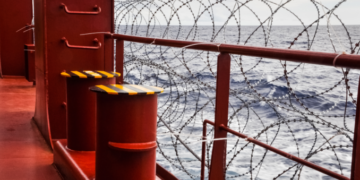Global demand for marine fuel saw a significant rise in 2024 as many shipping companies altered their routes to avoid the Red Sea. The shift came after attacks by Yemen’s Houthis in late 2023, prompting vessels to bypass the Suez Canal and instead sail around southern Africa
In particular, as Reuters reports, Singapore recorded new highs in bunker fuel sales, reaching 54.92 million metric tons in 2024—equivalent to around 955,000 barrels per day (bpd). Meanwhile, the United Arab Emirates’ Fujairah saw its first annual growth in marine fuel sales after years of decline.
Rotterdam also experienced a notable increase in bunker fuel demand. In the first quarter of 2024, sales rose 12% compared to the previous three months, totaling 2.16 million tons (about 38,000 bpd), as per Rotterdam port authority figures. These levels remained steady throughout the year.
In January, the Houthis declared that they would only target vessels linked to Israel following a ceasefire in Gaza, raising expectations for a potential return to the Red Sea and Suez Canal routes.
According to analysts from BNP Paribas and FGE, resuming northbound transits through the Suez Canal would likely reduce bunker fuel consumption. However, shipping industry leaders remain hesitant about navigating through the Red Sea again.
Rotterdam’s strong bunker fuel performance in early 2024 was largely driven by increased demand for high-sulfur fuel oil (HSFO) from larger ships.
Despite the early surge, total bunker sales in Rotterdam for the entire year declined by 1% compared to 2023, reaching 9.06 million tons (or 158,000 bpd), mainly due to weaker demand for very low sulfur fuel oil (VLSFO).
Overall, disruptions in global maritime trade significantly impacted key routes such as the Red Sea and the Suez Canal throughout 2024. The surge in marine fuel demand also highlights broader shifts in global shipping dynamics. With extended voyages around Africa leading to higher operational costs, some shipping companies have explored alternative strategies, such as increasing freight rates or investing in more fuel-efficient vessels.
Additionally, the disruptions have intensified discussions about energy security and the need for diversified fuel supply chains. Industry experts suggest that if Red Sea tensions persist, ports in regions like West Africa and South America could see increased bunker fuel activity as ships adjust their refueling hubs to accommodate longer journeys.

































































